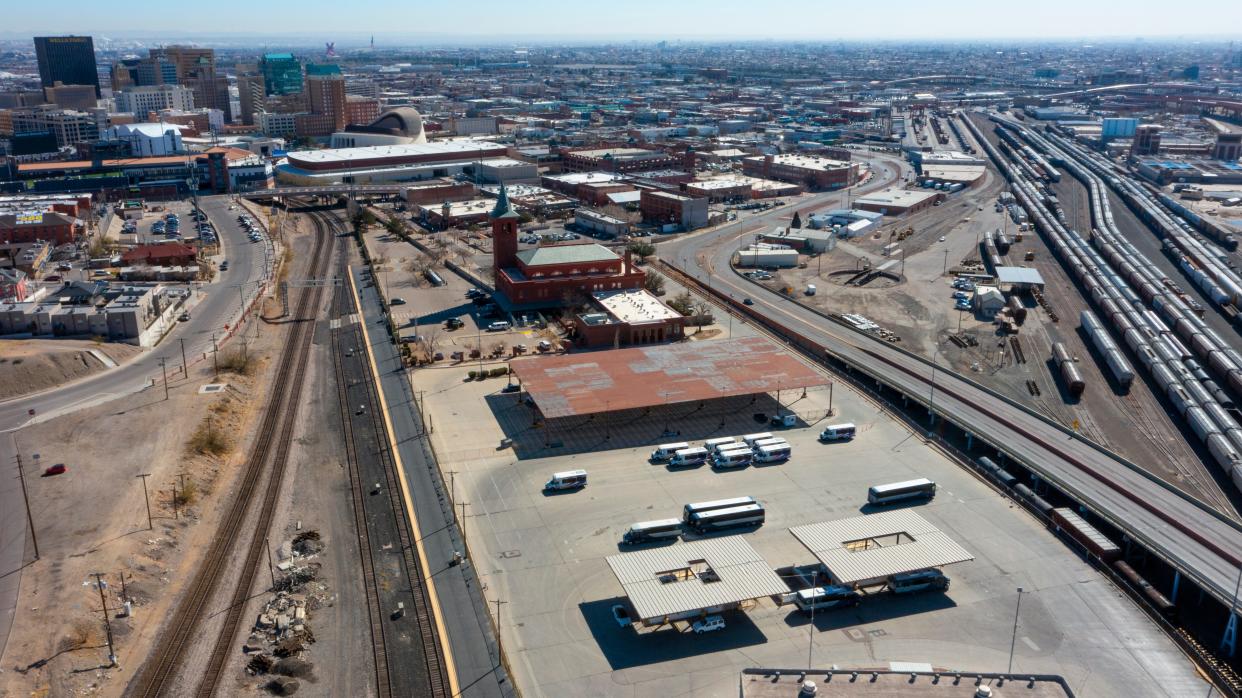'Cancel the (arena) project altogether': Max Grossman

I am responding to the recent guest column by Joyce Wilson, who claims that building the multipurpose center adjacent to the Union Depot “is a total waste of money” and urges El Pasoans to “stop listening to folks like Max Grossman, who do nothing but destroy our city and undermine its progress.”
To be clear, I had nothing to do with selecting the new MPC site and if it were up to me, I would get our city out of the entertainment business and cancel the project altogether.
My aim was to prevent the demolition of Duranguito, the displacement of its residents, and the use of eminent domain to acquire property for a Downtown sports arena that was disguised on the 2012 ballot as a “Multipurpose Performing Arts and Entertainment Facility.”
Since Wilson complains about the proposed MPC location and impugns our current city leadership, let’s examine her involvement in this project.
The plan for an “arena” (its original name) was proposed in the early 2000s by the Paso del Norte Group, a coalition of local business elites.
Wilson was appointed city manager in 2004 and oversaw the development of the arena concept and the rollout of the quality of life bond in 2012.
Anticipating how taxpayers and Downtown residents would react to such an invasive and expensive project, she sent an email on April 19, 2006, to Myrna Deckert, CEO of the PDNG, stating that the “Convention Center/Arena” would be a “lightning rod for tax increases” and advising Deckert to “focus on how to neutralize and engage the losers.”
Two months later, Wilson led the effort to adopt a branding strategy, commissioned from Glass Beach Marketing for $100,000, that portrayed Downtown Hispanic residents as gritty, dirty and lazy and suggested replacing them with people who are more entrepreneurial and better educated.
In November of that year, the city approved the Downtown 2015 Plan, which included a “flexible arena of 15,000-18,000 seats … for local and regional sports teams” and called for “redeveloping” our urban neighborhoods.
In 2011, the city hired Rick Horrow, a national expert on obtaining approval for arenas and stadiums, to advise them on the ballot language for the 2012 quality of life bond proposal. He recommended bundling the major “quality of life projects” into a single bond proposition, de-emphasizing sports.
However, in May 2012, Assistant Attorney General Thomas Griess advised city bond attorney Paul Braden to place the arena “in a separate bond proposition for the voters to consider,” but he was ignored and the arena, redubbed the “MPC,” was bundled with other projects under the misleading heading “museum, cultural, performing arts, and library facilities.”
More: Is Union Depot arena too small? City Council postpones vote to get community feedback
The city omitted the words “Downtown” and “sports” from the ballot in a cynical effort to deceive the voting public.
Three years later, in its request for qualifications for building the facility, the city revealed that its “ultimate objective is to build a first-class, sustainable arena that provides a flexible and usable sports and entertainment venue … with a target capacity of 15,000 seats for basketball games …”
However, only $180 million was earmarked for the project, not enough to build a 15,000-seat facility.
Today, only $162 million of bond funds remain, plus the future proceeds from selling the Duranguito properties, which cost the city $11.6 million in 2017.
Yet Wilson now claims that failing to build the MPC to at least 14,000 seats “is like flushing money down the toilet,” even though the city’s consultants reported in January 2023 that such a structure would cost $483 million.
She vilifies city officials who insist on staying within the $180 million budget, declaring that “small minds lead to small visions and mediocrity” and telling City Council members in an email that the new plan “represents the small pea-brain vision of recent El Paso leadership.”
She must mean the El Paso leadership that terminated City Manager Tommy Gonzalez without cause , passed the first no-new-revenue tax rate in a decade, halted debt issuance for an entire fiscal year, eliminated Transportation Reinvestment Zone 2 and other pork spending, and conducted multiple audits to root out waste and corruption.
This is the same Joyce Wilson who supported blowing up City Hall and the Insights Museum, valued at $14.8 million, for a ballpark that still requires $4.2 million in annual subsidies to stay afloat. Let’s not forget that she signed a contract with MountainStar Sports Group leasing them municipal parking spaces at a current rate of $1.21 per space on game days, and these are routinely sold to Chihuahuas fans for at least $10.
Wilson supported policies that resulted in increased deficit-spending and taxation and put our historic neighborhoods at risk, yet she accuses others of destroying our city and hindering progress.
By contrast, our current mayor and at least half of our city representatives are committed to fiscal discipline and to preserving our cultural heritage.
So who is the pea-brain?
Max Grossman is an architectural historian.
This article originally appeared on El Paso Times: City committed to "fiscal discipline" on arena project: Max Grossman

